Which plant is the best money plant? The answer is that there is no one answer to this question. To put it simply, different cultures believe that different plants can bring wealth and good luck. Therefore, don’t get surprised that the term “money plant” may refer to completely different houseplants, and that’s actually good. It means that you can surround yourself with a variety of plants may bring wealth and prosperity. Why not to use different looks of the green good-fortune-bringers to create a unique plant decor at your home. However, there are plants like Pachira aquatica or the Chinese money plant that appear on most money plant lists out there. Below is a selection of five easy to care for money plants that may bring good fortune and good ideas for decorating home.
The Meaning of Money Plants
As the name suggests, “money plant” is a plant that people believe can attract good luck, prosperity and wealth in home. Money plant is rather a symbol than an actionable advice to get rich. Nevertheless, in different parts of the world it is still popular to believe that one plant or another may help you attract positive energy and good fortune. So, why not to grow money plants at home and at the same time, surround yourself with good luck charms? Especially when their greenery work so well for home decor.
Speaking of the looks, in some cases that may be the reason why some plants are called money plants. For example, Chinese money plant (Pilea peperomioides) has round, thick, coin shaped leaves. Jade plant (Crassula ovata) leaf shape is similar to jade stone, which is also a symbol of prosperity and wealth.
If we look at the stories behind the money tree and money plants, they often share a similar narrative. In short, think of a struggling farmer who discovers a unique plant, starts propagating and selling it, and becomes wealthy. After this success story, they called the plant a “money plant”. You may decide yourself who brought the wealth, the farmer, the plant, or both.
Top 5 Easy to Grow Money Plants
Money Tree (Pachira aquatica)
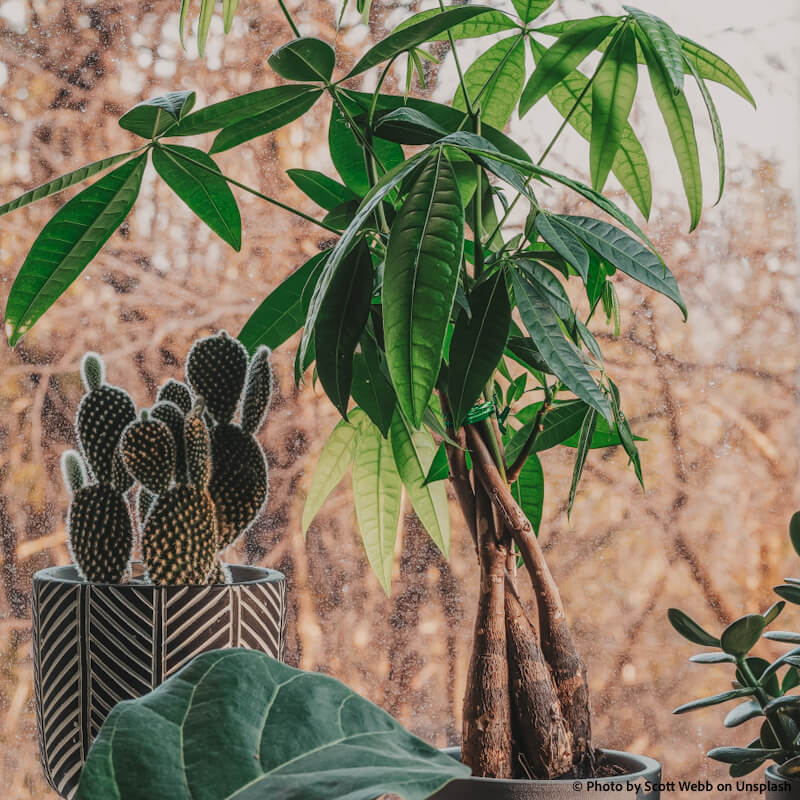
Pachira aquatica, also known as the money tree, Guiana chestnut or Saba nut, originates from South and Central Americas.
Money tree’s trunk is a braid of several stems. Both the braided trunk and bright green, star-shaped leaves are considered lucky according to feng shui.
Pachira aquatica is a low maintenance plant – water it once a week and make sure it gets bright, indirect light. At home, money tree can grow between three to six feet (approx. 1 to 2 meters) but you can control how tall it grows by choosing a smaller or bigger pot.
Chinese Money Plant (Pilea peperomioides)
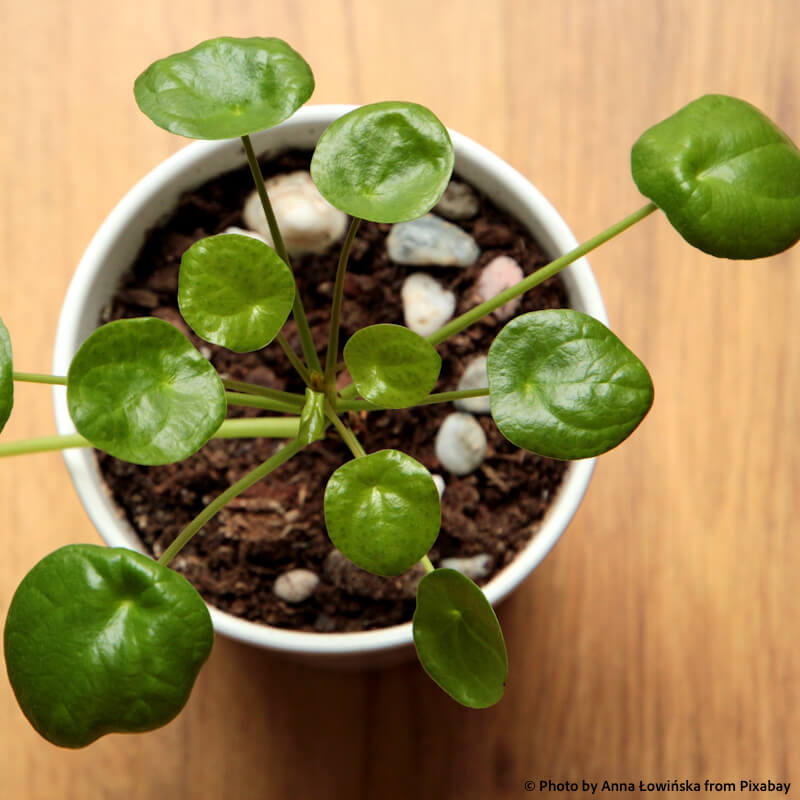
Originating from Yunnan province in southwestern China, Pilea peperomioides has many nicknames. Some call it the UFO plant or the pancake plant for its round and fleshy leaf shape. But probably the most common name besides the scientific one is the Chinese money plant.
This houseplant was originally believed to bring good fortune, money and prosperity.
Pilea peperomioides, especially the baby plants, may get confused with Raindrop peperomia (Peperomia polybotrya). Both plants have succulent-like leaves growing from a stem. However, the leaf shape is a bit different – Chinese money plant leaves are round just like coins.
Jade Plant (Crassula ovata)
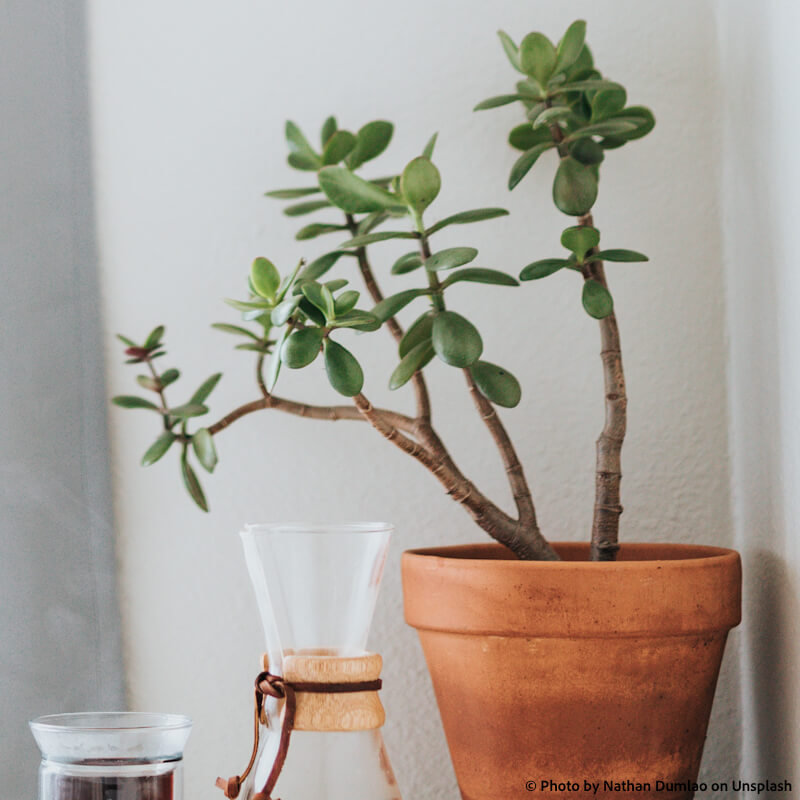
Crassula ovata, also known as the jade plant, money plant or lucky plant, is native to South and Southeastern Africa.
Jade plant is a succulent plant with thick branches and leaves that resemble the jade stones, symbolising wealth and prosperity.
As a succulent, Crassula ovata requires very low maintenance yet may easily develop root rot if the plant is overwatered. In fact, jade plant’s root system is quite small, therefore it requires a smaller pot. Combine it with a tree-like appearance and you may be able to prune your Crassula ovata into a bonsai style houseplant.
Lucky Bamboo (Dracaena sanderiana)
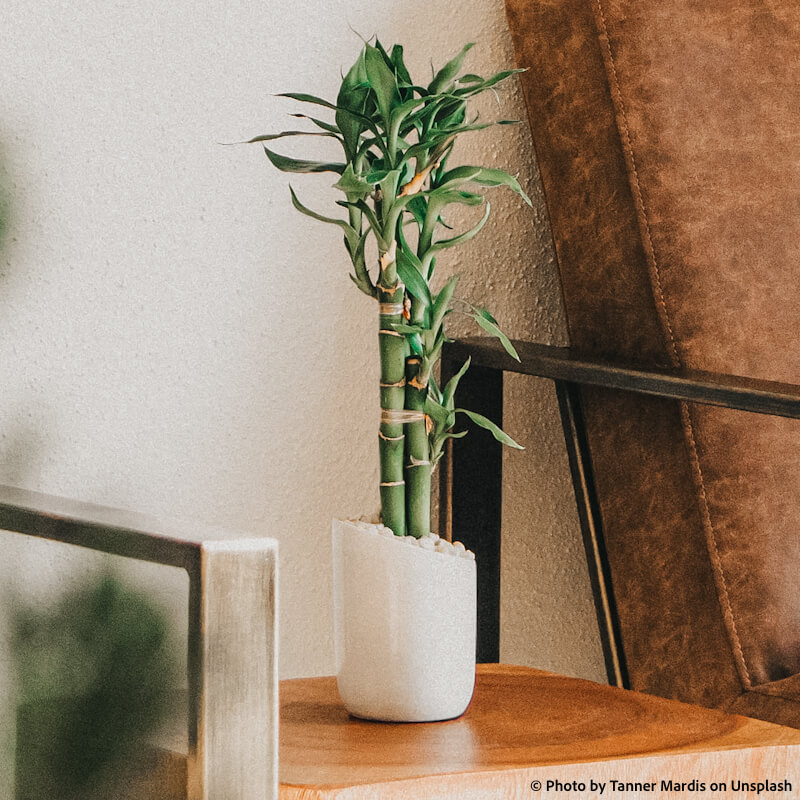
Lucky bamboo can be a tricky one. In general, it is a very lucky plant according to feng shui. Depending on the number of stalks it has, lucky bamboo may attract different things.
A very basic rule of thumb is to avoid 4-stalk lucky bamboo as number 4 is associated with death in Chinese tradition.
If to look a bit deeper into the meaning behind how many stalks lucky bamboo has, it looks like this. One stalk represents simplicity or truth, 2 stalks – love, 3 – happiness, 5 – five elements for balanced life, 6 – wealth and good luck, 7 – good health, 8 – growth and abundance, 9 – great luck, 10 – perfection, and the list goes on.
ZZ Plant (Zamioculcas zamiifolia)
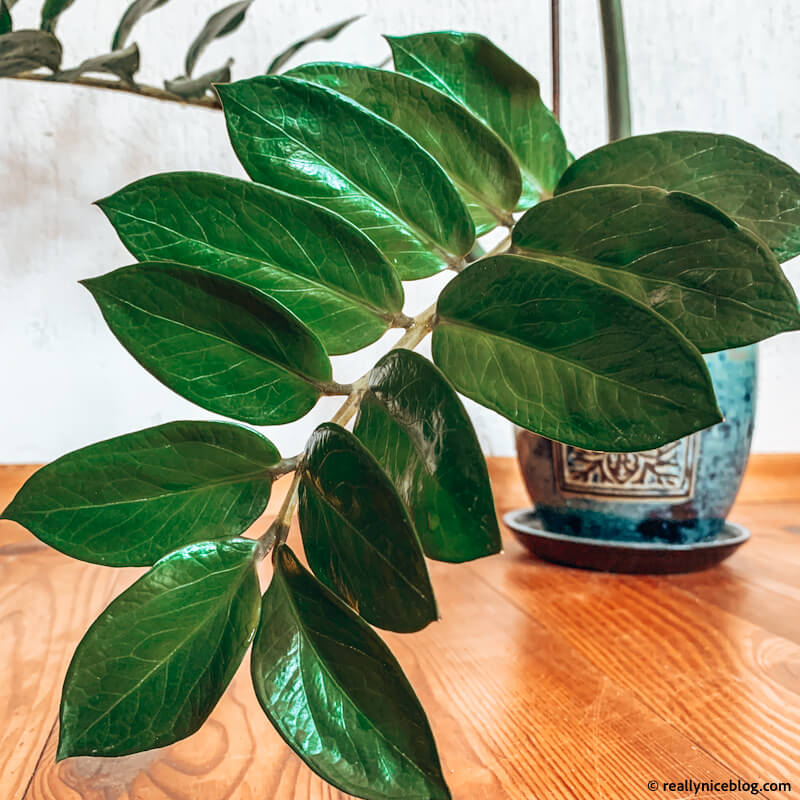
Thick, waxy, dark green leaves of ZZ plant symbolises growth, stability and balance, and is said to bring good fortune.
ZZ plant or Zanzibar gem originates from Africa and it is quite tolerant to drought. It can be watered as little as 1 to 2 times a month depending on the season. And not just that – the plant also tolerates and grows quite well in lower light. For these qualities, ZZ plant is super popular at many homes and offices, and is a great choice for beginners.
However, ZZ plant leaves may collect dust and therefore should be cleaned up regularly to maintain both photosynthesis and good look.
Where to Place Money Plants at Home?
According to Chinese feng shui and Indian vastu shastra principles, south-east direction of the house or room is the most universal location for money plants. Another way to find a wealth corner at your home is to stand at the front door and find the farthest left corner. Whatever you may choose, think about the plant – every plant needs proper care and conditions to thrive. And a thriving plant will bring happiness and positive energy to any home.
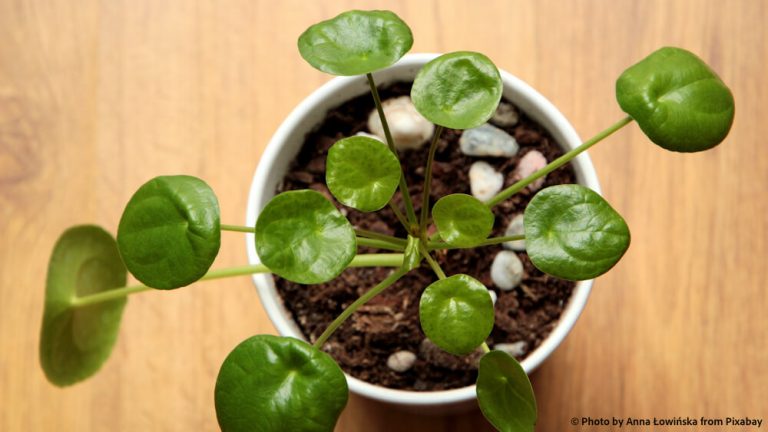
Hi there! I’m at work browsing your blog from my new iphone! Just wanted to say I love reading through your blog and look forward to all your posts! Keep up the fantastic work!